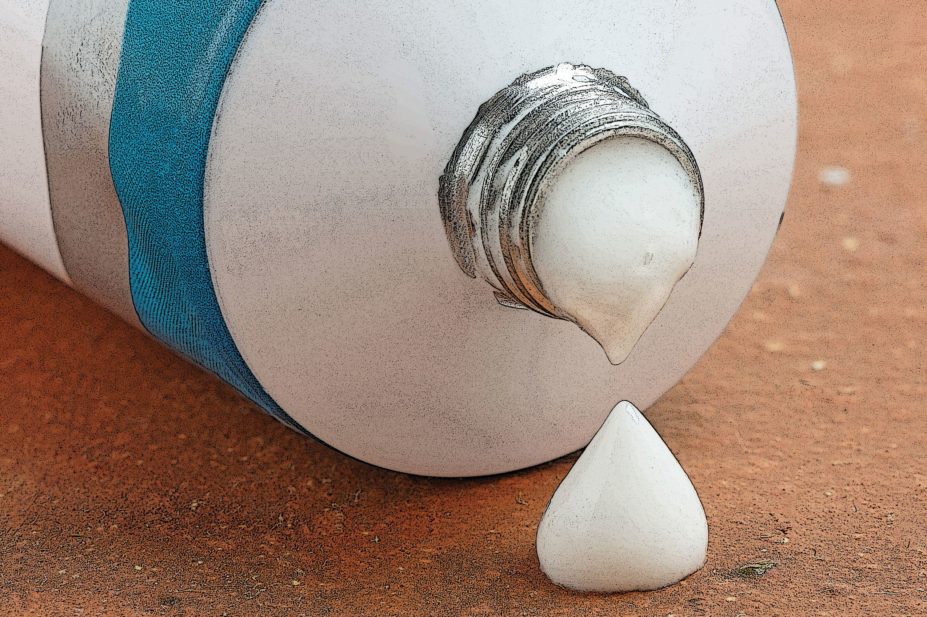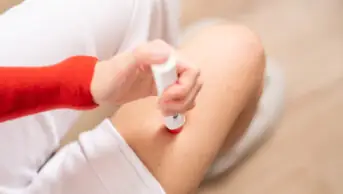
Shutterstock.com
Topical analgesic products have come under scrutiny in recent years. Evidence to support the use of these products is also limited and, as a consequence, some of them appear on the PresQipp DROP-list (an accumulation of medicines that commissioners considered as low priority, poor value for money or for which there were safer alternatives).
It is not unreasonable to ask why, if these products are so limited in usefulness, we have them in the first place. It is also not unreasonable to restrict the use of reasonably expensive products with limited evidence of clinical benefit, particularly at a time when the NHS is facing increasing limitations on budgets.
The first thing to consider is why we prescribe these products. My suspicion is that, often, topical analgesics are seen as “gentle” preparations. You put them on the skin; they work in the area of application, how bad can it be? They are not doing any harm. However, are they doing any good?
The topical analgesics under scrutiny currently are rubefacients and lidocaine plasters. Topical non-steroidal anti-inflammtory drugs (NSAIDs) and capsaicin are not affected.
Rubefacients
Rubefacients work by counter irritation, causing vasodilation, which contributes to the warming sensation many people find part of their appeal. They are often cheaper to buy over the counter than they are to prescribe, when you take things such as dispensing charges into account. Over £6m was spent on rubefacient purchase costs by NHS England in 2015. A Cochrane review[1] in 2014 found little evidence to support rubefacient use in either acute or chronic musculoskeletal pain conditions and they are considered less effective than topical NSAID preparations.
I cannot remember ever prescribing rubefacients. I have always viewed them as something that people can buy if they want to use them. I do check their suitability in light of a person’s polypharmacy but, if they like the warming sensation or I think they might benefit from the relaxing effect of heat to assist movement, then I am more likely to suggest a wheat bag, which tends to last longer and is reusable, sometimes for years.
Lidocaine plasters
Lidocaine plasters have seen a major rise in use in the past five to six years. For a product only licensed for post-herpetic neuralgia, an increasingly rare condition due to improvements in treating the acute shingles infection; this makes even less sense. What is clear from speaking to colleagues and examining local prescribing trends is that the product is prescribed predominantly off-licence and for conditions where the literature is not particularly supportive. Even the NICE guidance[2] on neuropathic pain does not encourage lidocaine plaster use, due to limited data in support of it.
Increasingly, advice[3] on restricting the use of lidcoaine plasters is being issued nationwide. As an occasional prescriber, this does not really concern me. On the rare occasion that I suggest them, it is as a two-week trial, which is plenty of time to determine effect. Anecdotally, people report a soothing effect of applying lidocaine plasters. They have a cool gel as the base and, in many cases, this is a pleasant sensation, especially for burning neuropathic pain. A similar effect can be gained from using cool packs, which are reusable.
Even in those reporting a numbing of the skin in the area of application, if it does not lead to meaningful reduction of pain and increased function, where is the benefit? Having areas with loss of sensation, either as a result of neuropathy or drugs, places the person at increased risk of injury. So lidocaine plasters are not entirely without risk at all. In older people with frail skin, susceptible to falls and minor injuries, losing sensation on the skin may inadvertently contribute to morbidity.
Tough choices
Like all medicines, we have to make tough decisions when finances are limited. We take decisions on the basis of the majority rather than on an individual patient basis. When restrictions are put in place, we are faced with people who will be unaffected because the treatment was not particularly effective for them anyway. There will be people negatively affected because they believe the product does work for them and they are concerned how they will manage without it. There are also issues around entitlement and the public perception of prescribing restrictions being entirely financially motivated. Those working in the area of formulary and strategic decision-making do not take these decisions lightly.
When undertaking alterations, communication is key. Honest explanations to patients are vital. It can assist in building understanding of the process undertaken when making decisions and setting them in the local context. Teams undertaking this work also need to ensure that everyone involved in prescribing and medicines supply are aware of the changes. Community pharmacists can be negatively affected with sudden formulary or product changes that leave them with excess stock on the shelves which cannot be returned. By working together across sectors, we can make sure that patients are supported through the changes.
References
[1] Derry S, Matthews PRL, Wiffen PJ et al. Salicylate-containing rubefacients for acute and chronic musculoskeletal pain in adults. Cochrane Database of Systematic Reviews 26 November 2014. DOI: 10.1002/14651858.CD007403.pub3
[2] NICE clinical guidance 173. Neuropathic pain — pharmacological treatment. November 2013. Available at: https://www.nice.org.uk/guidance/cg173/evidence/full-guideline-pdf-191621341 (accessed 7 July 2017)
[3] NHS PrescQIPP Bulletin 51 November 2013. Available at: https://www.prescqipp.info/-lidocaine-plasters/send/54-lidocaine-plasters/852-bulletin-51-lidocaine-plasters (accessed 7 July 2017)


